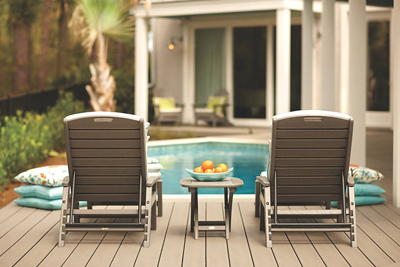Guide for Buying Lumber from a Distributor

To All Our Valued Customers, Over the past few years, the Covid 19 Pandemic has forced us to adapt and change the way we do things on a day-to-day basis. Florida Lumber is no exception. To make sure that we remain strong and competitive in the market for the years to come, Florida Lumber has had to adjust and change our vision for the future. In the last 2 years, we have stopped selling Sheetrock and drywall products, roofing felt and roofing materials, and have even closed on Saturdays.
Over the last few months, we have been transitioning our way out of the door supply business so on August 31, 2022, our door shop will stop assembling doors. We will continue liquidating our doors from inventory until we are out of material.
Some customers have asked if we are closing or even moving locations. To set the story straight, we are not closing or selling the business and we are not moving. These changes are all part of our new vision and path to continue serving South Florida and increasing our footprint in the construction supply industry.
Our focus is going to be on Lumber, Construction Materials, Rebar Fabrication and Rebar Accessories. As we have liquidated some of the items that we don’t sell anymore we have created more space to buy a larger volume of our core items and pass on the savings to our customers.
In the next year you will start seeing changes that will help improve our ability to serve you, our customers. We appreciate your business and your patience as Florida Lumber’s new vision becomes reality.
A Todos Nuestros Valiosos Clientes En los ultimos anos, la pandemia de el Virus (Covid 19) nos ha forzado a adaptarnos y cambiar la forma de hacer cosas en el dia a dia. Florida Lumber no ha sido una excepcion.
Para asegurarnos de mantenernos fuertes y competitivos en el mercado en los anos venideros, Florida Lumber ha tenido que ajustar y cambiar nuestra vision para el futuro. En los dos ultimos anos hemos dejado de vender los productos de yeso (sheetrock), paneles de yeso (drywall), tela asfaltica (roofing felt), materiales de techo y cerramos los Sabados. En los ultimos meses, hemos estado en transicion para salir del negocio de suministro de puertas, en Agosto 31, del 2022 nuestra tienda de puertas dejara de construir y/o cortar puertas. Vamos a continuar liquidando nuestro inventario de puertas haste que terminemos todo el material. Algunos de nuestros clientes han preguntado si estamos cerrando o si nos estamos moviendo a otra localidad. La verdad es que no estamos cerrando, no estamos vendiendo y no estamos cambiando de localidad. Estos cambios son todos parte de nuestra nueva vision y camino a continuar sirviendo al estado sur de la Florida y incrementar nuestras huellas en la industria de suministros de construccion.
paneles de yeso (drywall), tela asfaltica (roofing felt), materiales de techo y cerramos los Sabados.
En los ultimos meses, hemos estado en transicion para salir del negocio de suministro de puertas, en Agosto 31, del 2022 nuestra tienda de puertas dejara de construir y/o cortar puertas.
Vamos a continuar liquidando nuestro inventario de puertas haste que terminemos todo el material. Algunos de nuestros clientes han preguntado si estamos cerrando o si nos estamos moviendo a otra localidad.
La verdad es que no estamos cerrando, no estamos vendiendo y no estamos cambiando de localidad. Estos cambios son todos parte de nuestra nueva vision y camino a continuar sirviendo al estado sur de la Florida y incrementar nuestras huellas en la industria de suministros de construcción.
2431 N.W. 20TH ST.
MIAMI, FL 33142
PHONE: (305) 635-6412
Sales Fax: (305) 633-4054
Accounting Fax: (305) 635-3723
Email: sales@tloridalumber.com

It is not easy to select the right wood for a construction project or for carpentry. There are different types of lumbers present in the market, and the wide array of selections could be confusing to buyers. You may have difficulty choosing the right lumber for your next project once you visit a lumberyard or a local distributor. In this state of confusion, the following lumber buying tips may help you select the right pieces for your projects. You may find a variety of materials through lumberyards/distributors in relation to the species of woods, the thicknesses/grades of lumber and the machining process.
Lumber’s Thickness
There are two different types of lumbers. Softwood lumbers come from coniferous trees. Hardwood lumbers come from deciduous trees. Both variants offer lumber pieces of varying thickness, which is the most important factor to consider when buying lumber.
The pieces of structural lumber usually follow a standard dimension for thickness. The thickness of a piece of lumber is not written in inches. The measurement is usually written in quarters. A 1-inch board of lumber features 4/4 measurements. Some boards of lumber also feature 2x4, 2x6, 2x8 or 2x10 measurements. The thickness of a piece of lumber usually changes after going through the sawing and drying processes. A board also loses its thickness due to surfacing. It’s prudent to remember these points when checking the lumber’s thickness.
Board Food for Hardwood
Hardwood lumbers are available in various thicknesses, lengths, and widths. The board foot is a measurement that accounts for different variables of hardwood lumbers at once. To calculate the board foot, you measure the thickness and the width in inches. A board’s length is supposed to be measured in feet. To calculate one board foot, you can multiply these measurements and divide the result by 12. If this calculation seems difficult, then you may use another technique many woodworkers use. The four board-feet measurement includes 4/4 boards of eight feet in length and six inches in width.
Lumber Grades
It’s a daunting task for beginners to purchase hardwood lumber pieces based on their grades. The National Hardwood Lumber Association has set a grading rule. The majority of lumber companies use this rule to grade the lumbers. One side of hardwood lumber looks better than the other. The grade is measured based on the clear surface area of the inferior- looking side. This measurement can determine the amount of usable material present on the board.
The FAS (first and second) represents the boards with the highest grades. These boards are at least six inches wide. These boards maybe 8-16 feet in length and have at least an 83% clear surface. Hardwood lumbers can achieve ‘Select’ grading after the FAS grading. The No.1, No.2 and No.3 ‘Common’ boards have 66.6%, 50% and 33.3% clear surfaces respectively. FAS-quality lumbers are excellent for the manufacturing of tabletops or high-end furnishing items. The boards with No. 1 common grading are ideal for kitchen cabinets or smaller items.
Milling Options
An unprocessed piece of lumber has a rough surface and is not straight in shape. Each piece of lumber goes through milling processes to achieve a smoother surface and straighter shapes. You may find four different types of milling services in a reliable lumberyard. In SL/E (straight-line edge) service, the rough board becomes straight after ripping off one edge. The ‘hit-and-miss’ service removes 1/16-inch off the surface to make both faces of the board smoother. The S2S service also offers smoother faces on both sides with the removal of a 1/16-inch surface. With S4S service, the lumber board gets smoother faces and edges.
Conclusion
We hope these lumber buying guide will help you select the best piece of wood for your projects and determine the true value of a lumber piece based on its basic qualities.

